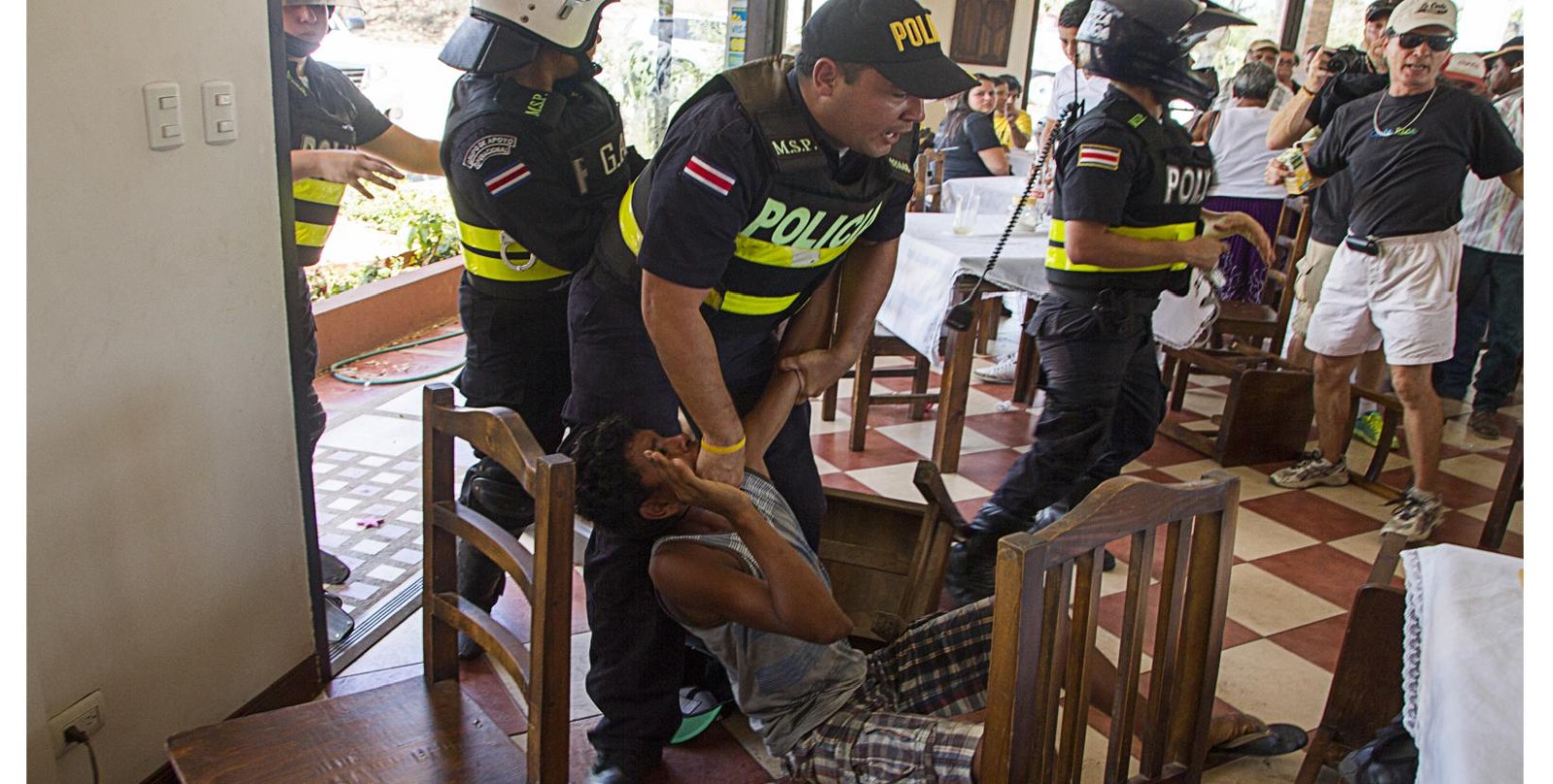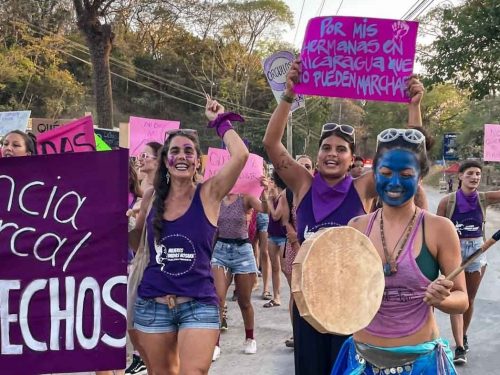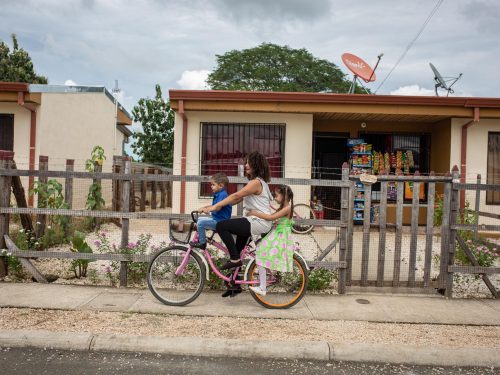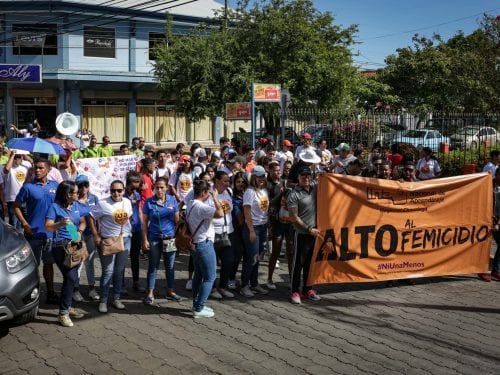
Facing the very real possibility of losing their homes and way of life, on February 24 groups of protestors from coastal communities around the country merged and blocked the Interamerican Highway near the San Gerardo gas station in Chomes, Puntarenas. They were exercising their right to manifest in favor of the Coastal Community Territories Law Project, known as TECOCOS.
TECOCOS recognizes the more than 50,000 families and fishermen that inhabit the nation’s coasts and islands, many of whom live marginalized and in subsistence conditions in an effort to preserve the culture, customs and traditions of these communities.
In response, a unit of some 30 anti-riot officers of the Public Force used tear gas, violated private property when they entered a restaurant where some protestors had taken refuge from the tear gas, overturned tables and chairs, attacked demonstrators and arrested eleven people and left more than a dozen injured (including one elderly person and a youth).
Two members of The Voice of Guanacaste staff were on site to witness the events. They also sought shelter from the tear gas in the San Gerardo Restaurant, where they found themselves trapped, absolutely shocked and overwhelmed by the use of violence, something that no one was expecting to see happen in peace-loving Costa Rica on that day.
They watched as the police surrounded the restaurant. Perhaps the most dramatic moment, when the police entered the restaurant, a girl about 4 years old inside the restaurant was very scared and older women started to pray. People screamed as the police broke chairs. They took a minor by force and when an older man stood to defend him, they grabbed and beat him.
When they threw the tear gas canisters less than 100 meters from a gas station, everyone was afraid that there would be an explosion, although later our reporter learned that the police had discussed it beforehand with the owner of the gas station and they had taken security measures.
What has been the response of the Presidential House to this use of violence?
Silence.
This is not a time for silence. The Public Defenders’ Office (Defensoría de los Habitantes) requested that the Public Ministry investigate the police suppression of the protest, but as of the time when this editorial was written, no response had yet been received.
Surely the desire of the government is for this incident to be forgotten and disappear, but that is not likely to happen. The government wants to regulate something that was left unregulated for decades, and the result up until now is utter disorder. The presidential moratorium on evictions in the maritime zone only lasts until October 14 of this year, and the people who live along the coasts will continue to struggle to keep their homes.
It is true that the protestors initially blocked both lanes of the highway, producing traffic jams of more than 5 miles in both directions, and the right to free circulation is also vital. But it must be noted that the protestors allowed ambulances to pass, and several of the drivers struck in that traffic jam expressed support for the protestors and empathy for their situation. When asked by the Public Force, the protestors opened one lane of traffic so circulation could continue.It was after they opened the lane that the police broke out the tear gas.
There are far better ways to handle this situation and to find a real solution that brings peace and order to the maritime zones rather than tears and chaos, and this requires empathy and respect all the way around, from the presidential house, the legislators, the police, the municipal governments and the people who have called Costa Rica’s coasts home for generations.







Comments